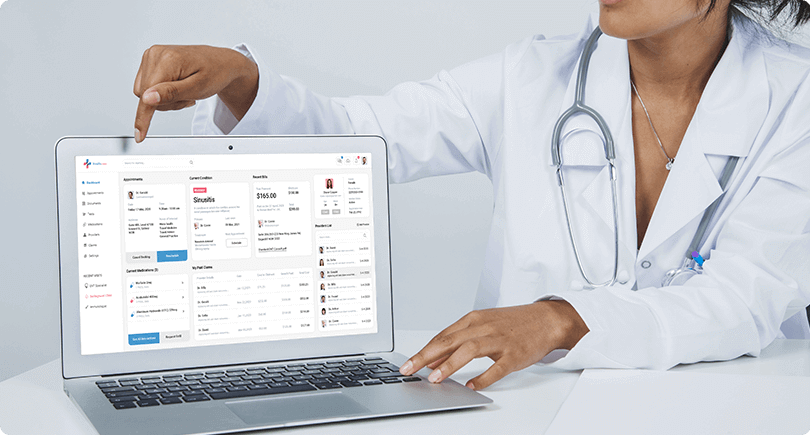Table of Contents
Electronic medical records are digital versions of patients’ medical charts. They contain a patient’s health history compiled at one medical organization. Things like previous diagnoses, past treatments, medications, immunizations, allergies, and substance abuse (if any) are found in a person’s health records. An EMR system acts as one repository for patients’ medical information, allowing providers to access it for faster decision-making.
The presence of EMR/EHR systems at clinics or other medical centers helps doctors access vital information about patients. Knowing what a person might be allergic to or their existing health condition helps the medical staff make informed treatment decisions. The absence of this data impedes care and might even harm the patient’s health with side effects.
Introducing EMR systems at hospitals was one of the first steps toward digitizing healthcare workflows. It would be an understatement to say that the industry has come a long way since this milestone. Today, EMR software development and things associated with the same form a big chunk of the healthcare technology industry. Continuing investments in medical tech and shifting policy have resulted in a large market for such software, which keeps growing steadily. Let’s discuss medical records and their development lifecycle.
How Do EMR Systems Differ From EHR Systems?
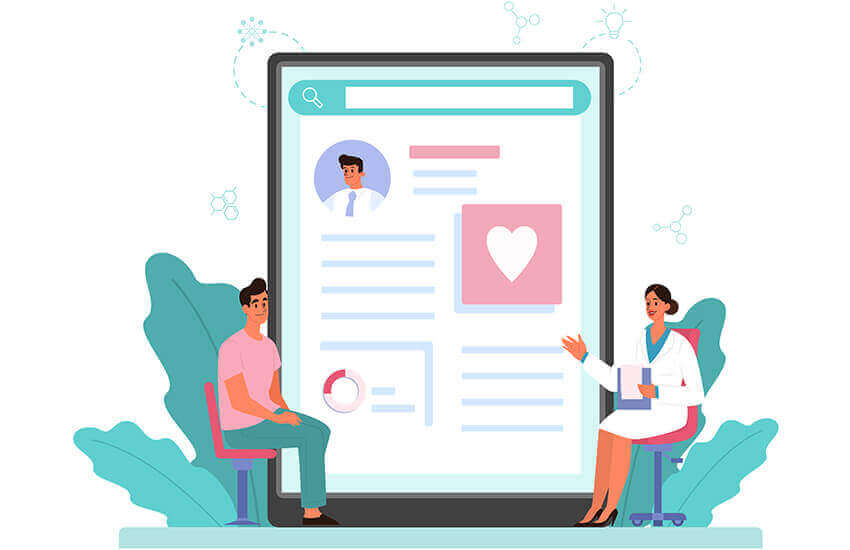
People unfamiliar with healthcare technology and associated terminology often interchange the terms EMR/EHR systems. While they seem the same, the two have marked differences. These differences eventually result in the development decisions of both EHR and EMR software systems. In this section, we will explore those differences in detail.
Electronic medical records are digital versions of a patient’s medical chart created at a clinic or hospital. It is created when a person goes to a clinic and gets tested. Although EMRs enable providers at a single facility to coordinate care, they cannot be transferred to other organizations. Moreover, the patients are only allowed to take their EMRs in the clinic that creates and maintains them. EMRs contain all about the diagnoses and treatments done by providers at one clinic.
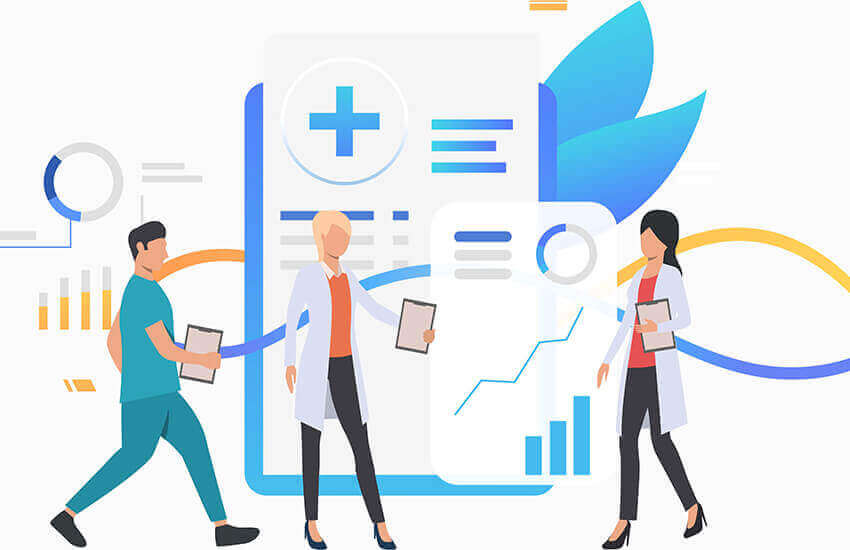
On the other hand, an electronic health record is like a digital record of a patient’s overall health. It would contain information about the tests, diagnoses, prescriptions, and treatments done by doctors from all organizations throughout the patient’s life. In other words, an EHR is a comprehensive picture of a person’s medical history.
Unlike an EMR, an EHR is highly versatile and can be shared with providers from multiple healthcare organizations. Additionally, EHR software systems enable physicians and providers from multiple organizations to collaborate on patient care. This is especially helpful for people who need specialist opinions and regular care. Moreover, the ability to pool together the expertise of multiple medical professionals helps people suffering from rare diseases immensely. Doctors can also share their notes by uploading them on the EHR software, facilitating meaningful coordination.
Needless to point out, these differences are important considerations when providers need to choose between EMR solutions and EHR systems. Software for electronic medical records would have more features compared to that for electronic health records.
Additionally, the size and location of a medical organization also play a part. A small, single-physician practice away from an urban location could do enough with an EMR. On the other hand, a larger organization with multiple providers and services would generally need EHR software to serve its patients adequately. Such a place would generally see more patients daily and offer more services. Depending on its location and services offered, it is also highly likely to refer its patients elsewhere.
These factors represent the fundamental differences between an EHR and an EMR. Although many people use them interchangeably, they are not the same. It is safe to say that EMRs came before EHRs at the very beginning of tech adoption in healthcare. But it was only a matter of time before the medical community realized the importance of collaboration through information sharing. EHRs make it easy to share medical data and serve patients better. These are the factors that providers consider when choosing one of the two.
Why Must Healthcare Organizations Use EMR Software?
Electronic medical records provide fast and convenient access to patient’s medical information. Providers can use them in emergencies to know how to treat a patient safely without dangerous side effects. So, whether it is a small clinic or otherwise, having EMR EHR systems becomes vital for providers to do their job properly. In this section, we will discuss why it is important for medical facilities to use an EHR/EMR platform.
The presence of digitized patient records directly helps to boost the speed and efficiency of all clinical activities. Let’s understand why it is important for medical organizations to use EMR software systems –
Lower Operational Overhead
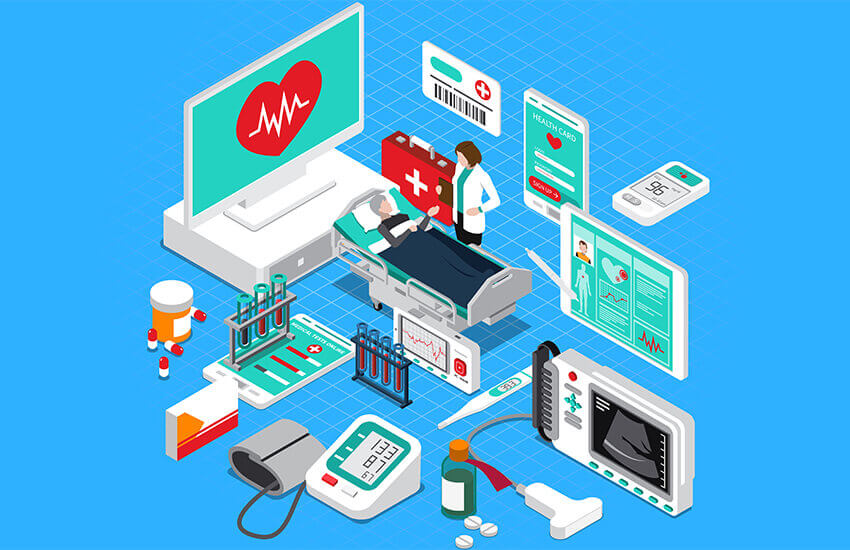
Using EMR for common practices eliminates or minimizes the need for physical documentation. Providers and administrative staff can store and retrieve documentation with a few clicks on a screen. This makes everyday operations much faster and makes managing patients’ information easier since storing paperwork manually is unnecessary. As a result, a clinic or a private practice can serve patients with a smaller staff and no need for physical storage space. This lowers the overhead for providers.
Improvement in Treatment
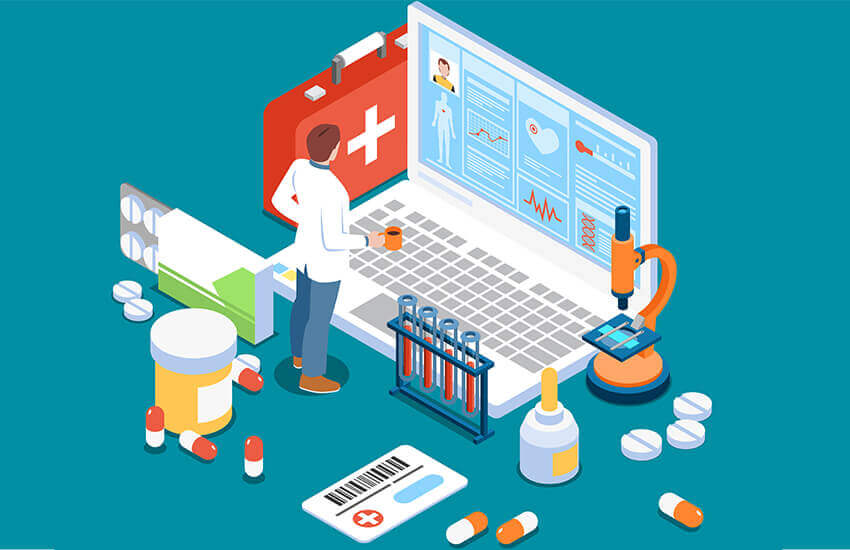
All patients’ medical data on a screen helps providers make informed treatment decisions. This is because not everyone is bound to respond the same way to the same treatment for a disease. A person with a heart condition or diabetes might respond differently to a prescription for painkillers than a healthy person.
However, in case of an emergency like a car crash or other type of accident, doctors in the ER need to make quick decisions. EMR software systems enable them to access patient history rapidly and make informed decisions that would save lives. Patients cannot carry their medical records around. Electronic records provide doctors with the data they need to know.
Better Coordination
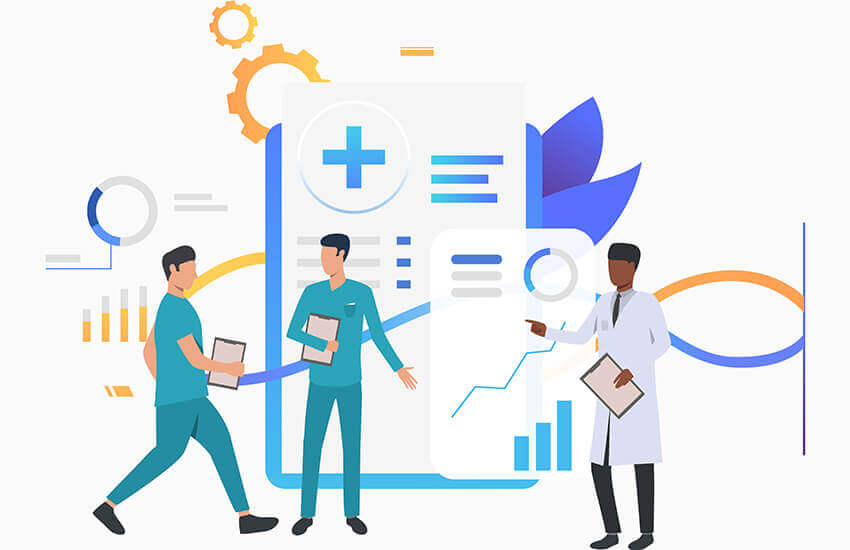
A clinic would have a front-office staff, one or more nurses, and doctors. So, the day-to-day medical operations would include managing appointments, verifying insurance, consultations, prescriptions, and so on. An EMR system makes it easy for everyone to access the required patient data to do their jobs and work cohesively. Additionally, digital versions of patients’ data in medical records enable multiple providers to coordinate their activities. Streamlined coordination not only improves the overall efficiency of everyday activities but also improves the overall patient experience.
Improved Revenues

The use of EHR/EMR software lowers the overhead of everyday activities, both clinical and administrative, as mentioned above. Additionally, electronic records maximize the speed of those activities since there is no need to handle physical paperwork. This eventually translates into a better patient experience regarding quality of care and management. Both these factors result in higher revenues in the long run, owing to optimizations, higher patient loyalty, and lower costs.
Reduced Errors

The most obvious advantage of not having to deal with physical paper is the reduction in human errors. The chances of mistakes reduce sharply when people enter or use information with a click rather than manually. Furthermore, it also reduces billing errors since the staff can use patient data directly from the medical record systems for coding and claims preparation. This undoubtedly leads to increased staff efficiency and lower losses due to human errors.
Desirable Features of EMR Systems
The EMR and EHR software development market, is growing rapidly due to the rapid increase in tech adoption in the country. They pave the way for the functions of other healthcare software platforms to be leveraged during day-to-day activities. Knowing which features to include is integral to EHR development. This section will look at the best features to include in medical records.
The list of features is perhaps among the first considerations for a company aiming to develop EHR systems. It depends on the customers being targeted. A small clinic’s feature requirement would differ from a large hospital’s. Nevertheless, whether it is a medium-sized or a large organization, the following is a list of desirable features during EHR development –
1. Integration With Testing Laboratory
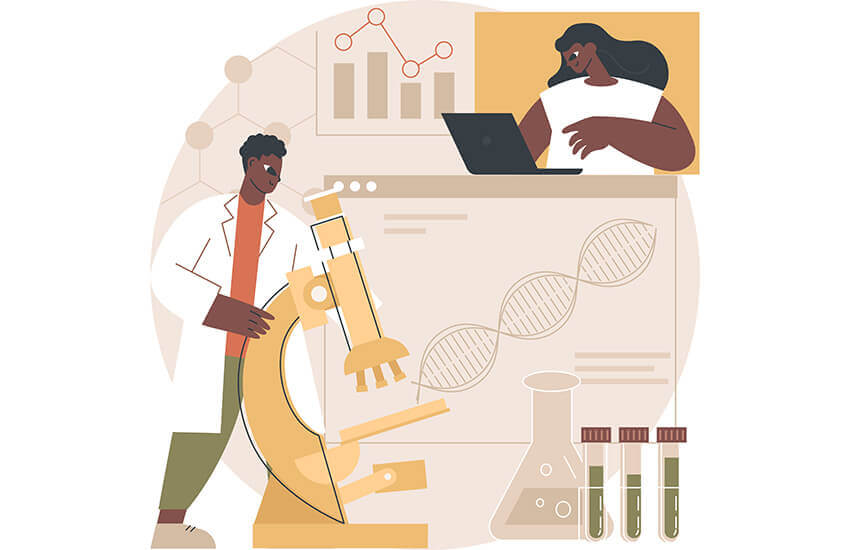
Integration with a laboratory information management system enables rapid electronic data interchange. This allows test results to be fetched and entered into medical records with a few clicks. This feature is especially important for large hospitals operating in-house testing labs. For organizations that see numerous patients daily, the ability to receive test results on a physician’s screen and upload the same to patients’ records is extremely helpful. It speeds up the care process and helps providers serve patients better. For admitted patients, fast retrieval of test results helps doctors make treatment decisions faster.
2. E-Prescriptions
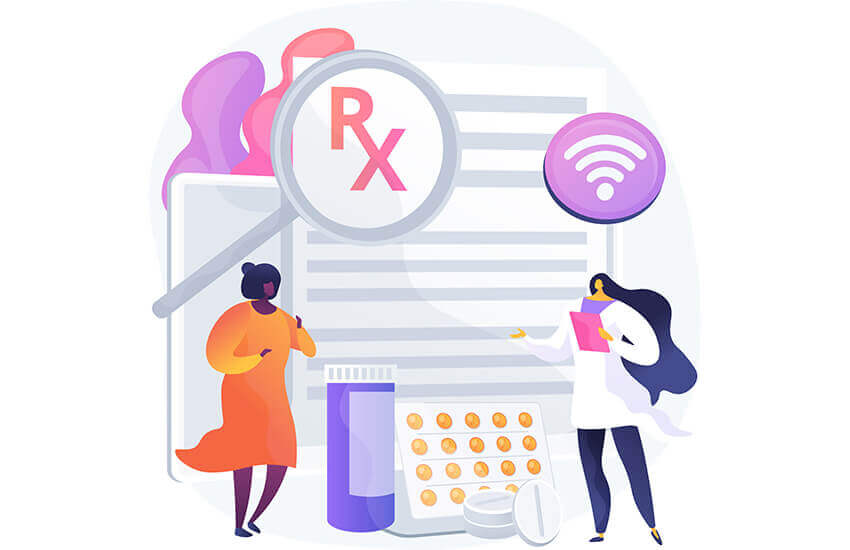
Electronic prescriptions enable providers to fill out a patient’s prescriptions online from their end, allowing patients to access the same. When doctors see patients, they view their medical records to know their health history. Information about previous medications helps doctors prescribe appropriate medicines to avoid adverse reactions. Moreover, doctors can also check the patient’s insurance coverage and prescribe only those pills covered by the health plan.
E-prescriptions mean that patients no longer have to deal with paper-based ones. The prescription will be in electronic format and sent to the pharmacists directly by the providers. This allows the pharmacy staff to prepare each prescription in advance and reduces patient wait times. An added advantage of E-prescriptions is that patients won’t have to deal with doctors’ illegible handwriting, preventing potential medication errors.
3. Integration with Third-Party Applications
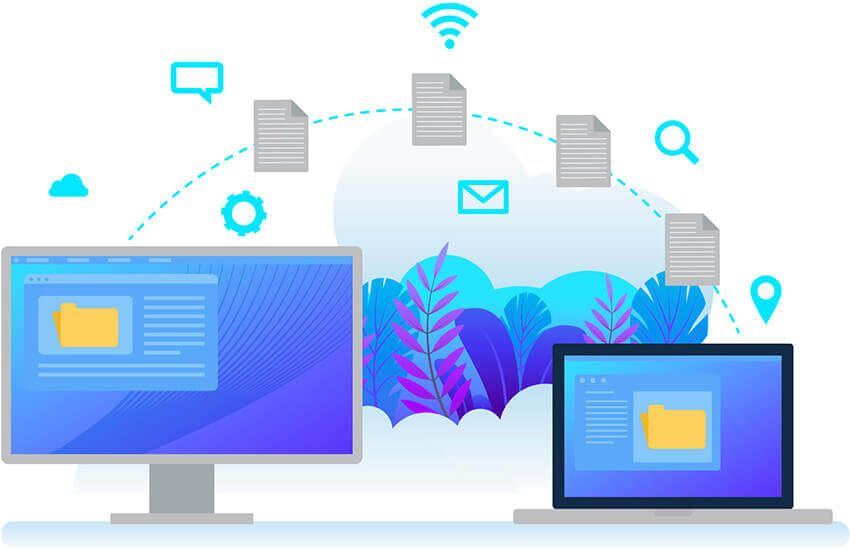
This is one of the most important features of any type of medical record software. EMR interoperability means that it can exchange data and communicate with other software. These could include software for remote patient monitoring, E-prescriptions, telehealth solutions, and practice management solutions.
The data exchange facilitated by integration allows providers to use multiple applications simultaneously while viewing patients’ records. For example – a doctor offering virtual consultations through a telehealth application can also pull up the patient’s records, view his or her medication history, and write an e-prescription to send to a pharmacy. The doctor can do all these from one interface during the live consultation without hassle or interruptions. Feature for EHR Integration empowers doctors and medical staff to do more and serve patients better.
4. Charting

Charting is one of the most tedious and cumbersome activities providers, and nurses must do. They often need to stay back even after their shifts and fill out the charts. Not only is this prone to errors, but it also leads to burnout for the staff in the long run. But a feature for charting in medical record systems accelerates the process and helps lower the chances of errors. Functions, like customizable templates to suit organizational requirements and verbal dictation make the process easier.
5. User-Friendly Interface
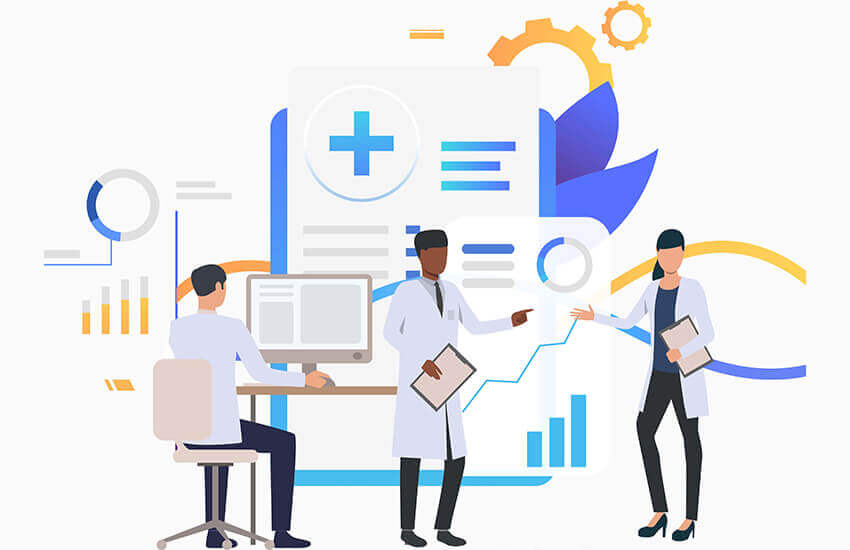
Although this is not a specific feature to be included in an EMR or EHR, it is extremely important for every software. A user-friendly interface will make it easier for the staff to get used to working with the software. The application’s usability depends, in no small way, upon the interface. When doctors and nurses can easily navigate the features, they can do their job better and serve patients well.
Furthermore, a good interface will directly impact the platform’s popularity, which means its sales among the medical community. So, a user-friendly interface is paramount for EHR software development.
6. Patient Portal
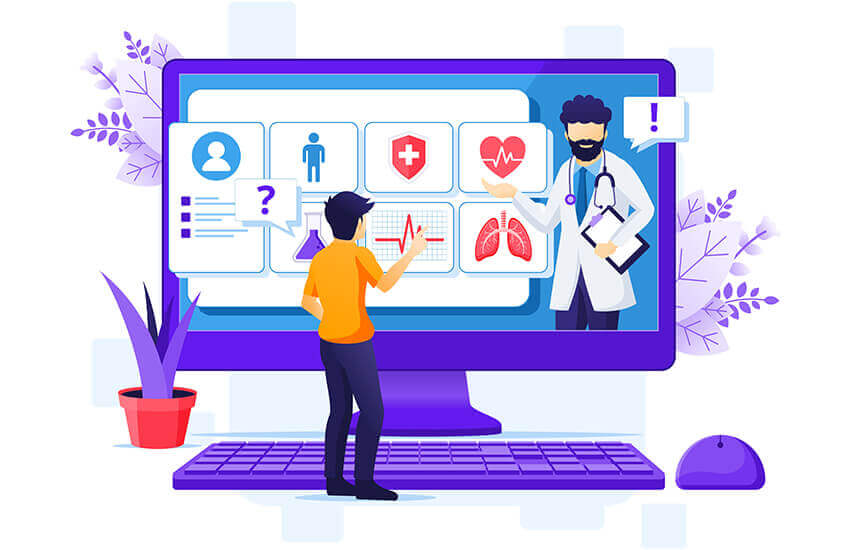
A patient portal is a powerful tool for developing doctor-patient engagement. It can be a feature built within an EMR solution or a standalone platform integrated with medical records. Nevertheless, it allows patients to view their medical data and be more involved in their treatments.
Patient portals allow people to view their test results, allergies, and prescriptions and even request a refill online. Moreover, some even have a feature to schedule appointments and see upcoming ones.
7. Cloud Hosting
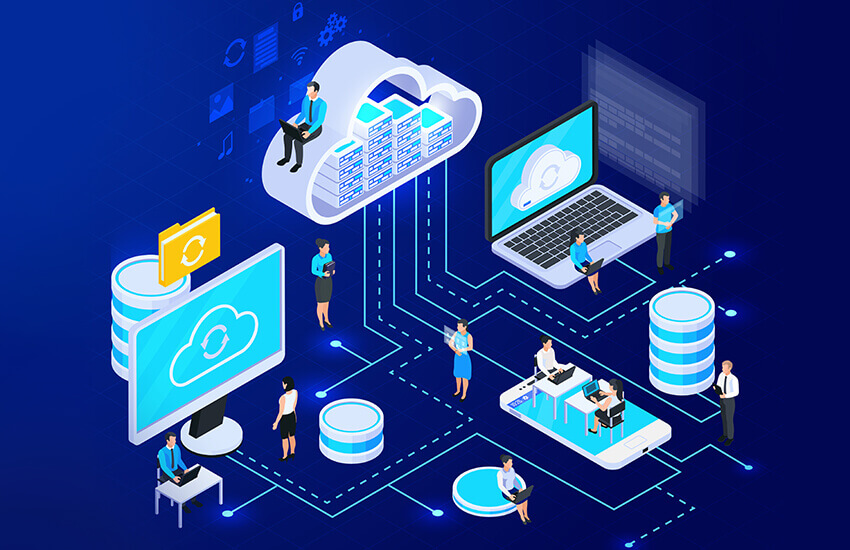
An electronic medical record system hosted from the cloud offers many advantages over locally hosted ones. Unlike the latter, they don’t need clinics or hospitals to invest in and maintain the dedicated hardware on-premises. The software providers of healthcare cloud computing services will take care of that. Medical organizations also won’t have to establish an IT infrastructure with a team to maintain it.
Cloud-based EMR systems can ensure the security and integrity of data better than on-premises ones. This is because the data will be stored on servers at a remote location and backups at a separate place. This guarantees business continuity and the safety of patient data in case of malfunctions or other calamities that might compromise data stored on-premises.
8. Access Controls
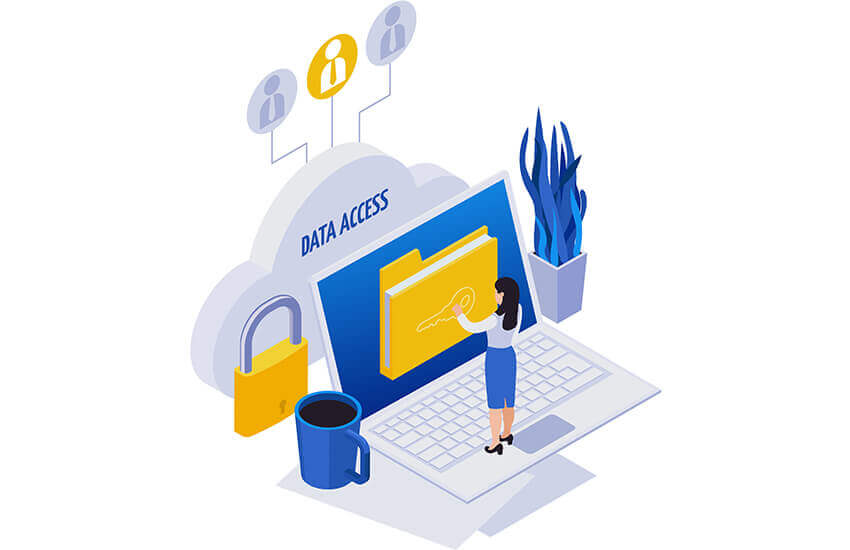
People’s medical records are sensitive and confidential data protected by stringent government regulations. So, a company developing an electronic health record app must endure the privacy and safety of this data. Access controls are a great way to achieve this. As the name suggests, this feature would enable hospitals to restrict who can access patients’ data. Moreover, audit trails would also serve as deterrents to people who might attempt unauthorized access. In other words, access controls provide additional layers of security.
Steps Involved in EMR Development
Developing an EMR platform for a healthcare organization is a tall order. The market for this software and its associated services is growing each year. Several companies involved in healthcare technology continue to pour time and resources into building the latest EMR software. In this section, we will go through the basic steps involved in developing such an application.
Ideation and Market Research

The first step towards building any type of software is to establish the idea for it. Entrepreneurs and technologists usually get an idea after spending considerable time working on similar projects in the industry. While most ordinary people can think of an idea for an EMR or EHR solution, the idea for development must also include factors like the potential market, competitors, and a unique selling point. Most innovations generally stem from the existence of a problem and a desire to address that problem.
In short, the idea must also include fixing the problem or offering something others are not. This is where market research comes into play. Knowing what is already out there gives an idea of the playing field and offers clarity of the task ahead.
Strategize

Ideas alone might not amount to much without a concrete plan for their development. This is where a strategy is necessary to execute the idea. The EMR software development process requires skilled programmers who can develop the code. This can be achieved partly by a single person or by hiring a team. Either way, an initial plan is necessary to procure the resources for getting the process going from conception to reality.
Working Prototype

After the idea for medical records has been established, it is time to give some form to it. The developer or the company building it establishes the flow of processes and functions for the application. This would be enough to demonstrate the product’s working, with bare minimum features. A working prototype helps the development get some perspective on how the software will work and in which direction the development needs to proceed.
In the case of a new company, the working prototype could be the deciding factor for further growth. Potential investors or creditors look at the operation of the prototype and decide to forward working capital. The prototype needs the right technology stack corresponding to its list of features and functionality.
The prototype is also where the features of the EHR software solution would be finalized. This will also depend on the market research conducted before the prototype development. It helps the developers decide how to proceed with the development.
Development

This is the part where the development of the electronic health record app takes place in full swing. The company charts the overall process and breaks up the task into smaller components to be divided amongst the team. Each member then goes on to complete his or her task. This will usually be led by an experienced project manager responsible for achieving pre-established milestones. Additionally, the company can have a team of developers in-house to contract the work to independent freelancers. While the latter might be cheaper in the long run, the former provides better management control over all the day-to-day processes.
Testing
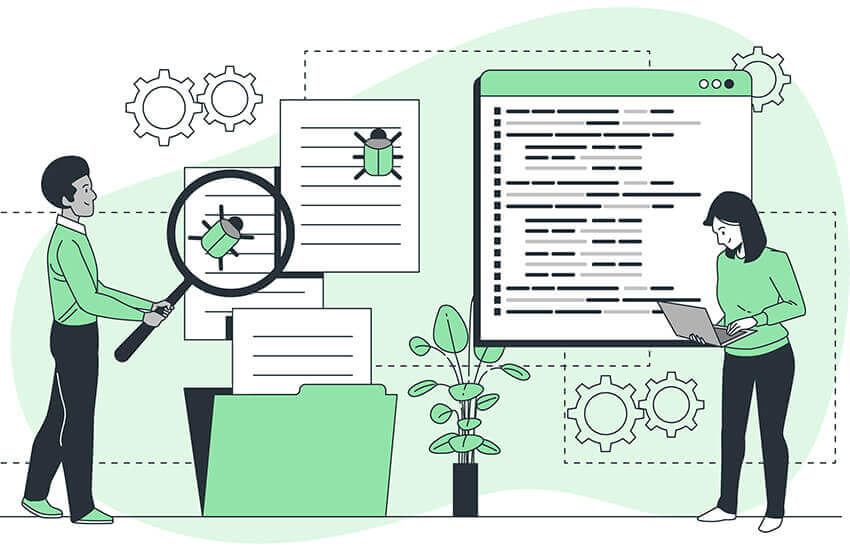
As the name indicates, this phase of EHR system development involves testing the application against established industry standards. The company that developed it may have testers in-house or contract it out to another company. Testing is important to ensure that everything works as intended and where improvements are needed. The testers would prepare a detailed report on what they discovered, based on which the developers would make the necessary changes.
Since the application is for the healthcare industry, it must comply with the HIPAA (Health Insurance Portability and Accountability Act) regulation. This ensures that the platform has adequate security measures to prevent the loss or leakage of confidential data. This is one of the most vital aspects of building any type of software aimed at healthcare. Violation of HIPAA regulations usually results in steep penalties or prison time, or even both.
Deployment
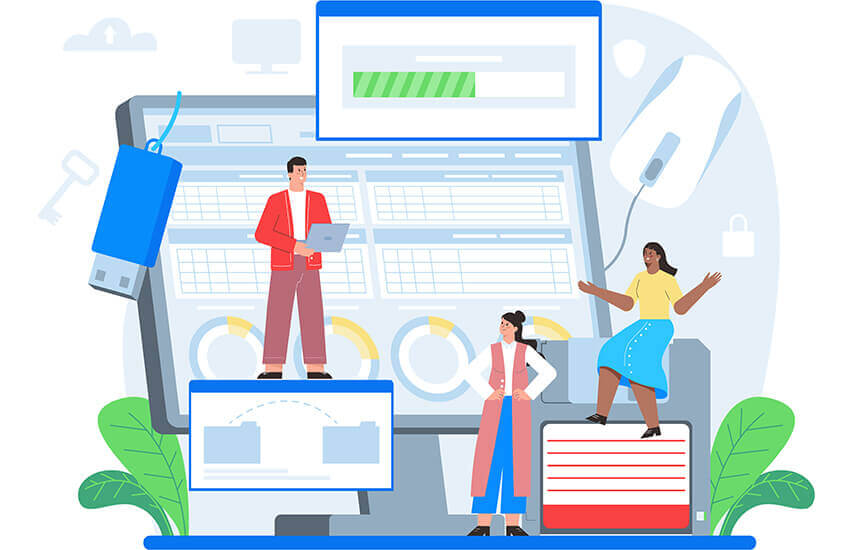
This is the part where the software platform is installed on the client’s servers. The company that developed it sends a team of experts to deploy the platform on the client’s systems and run a final test to ensure it functions as intended. An integral aspect of the deployment phase is integration. This is where the EMR application will be integrated with other healthcare applications like a practice management solution, telehealth platform, and coding and billing software.
Integration is possible by making the EMR solution interoperable with other platforms. This allows them to exchange data and use it for day-to-day activities. The easy data exchange enables medical and administrative staff to complete their work faster and with fewer errors. The biggest advantage of integrating an EMR or EHR with hospital systems is one unified, comprehensive platform for clinical and non-clinical operations.
Staff Training
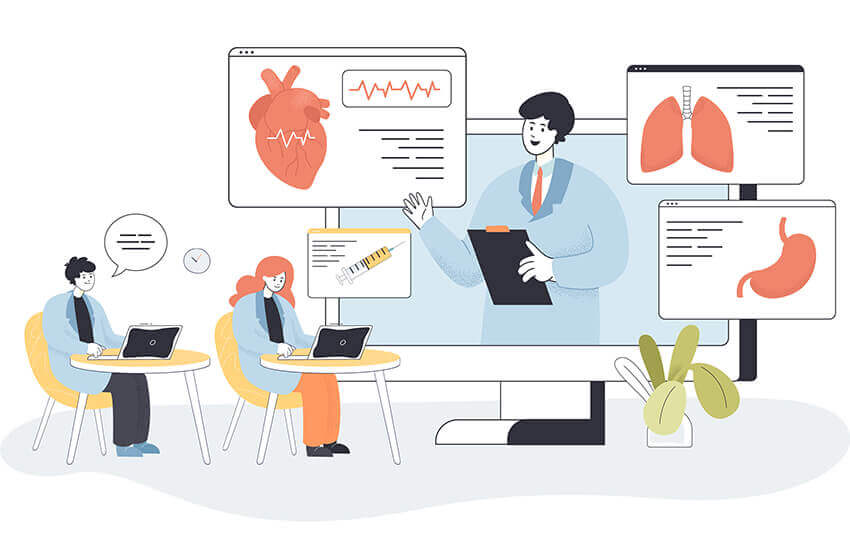
Following the deployment of the EMR solution on the hospital’s systems, the company that built it proceeded to train the staff on it. Depending on the organization’s size, this process could take a few days to weeks. The process would be relatively simple and quick for a small clinic or practice with one or few providers, as there won’t be too many functions. This process could take a few days. On the other hand, staff training could take weeks for large hospitals since many employees would be engaged in as many activities.
The training covers how the use the application, handle the data exchanges facilitated by integration and do so safely. This is to ensure responsible use of the platform that does not endanger the privacy and integrity of user data.
Maintenance and Support
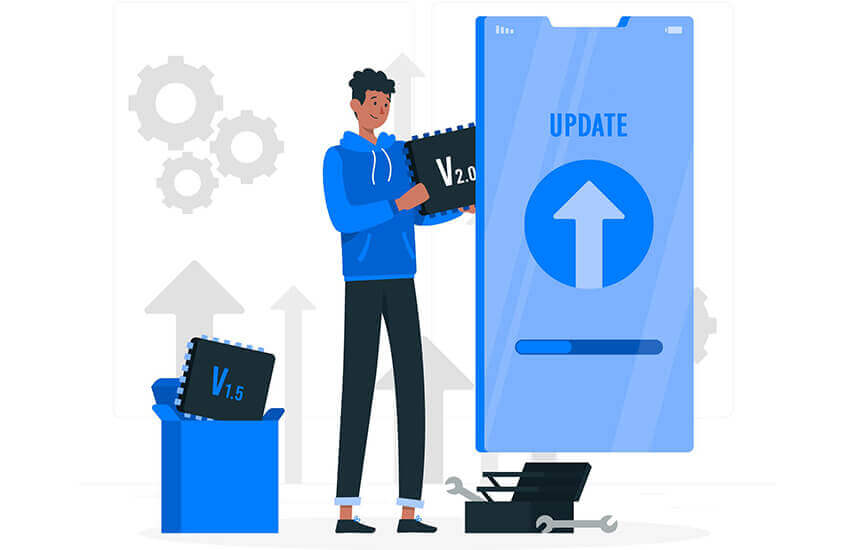
This is the last phase of the overall development lifecycle of a medical record system. After it has been successfully deployed in an organization and the staff trained on it, the company must ensure timely support. This includes technical assistance during downtimes and periodic updates to keep the software free from bugs or glitches. The assistance could be on-site or remote, depending on the emergency. Support is a vital component of the software development process. A company with a poor track record of offering support would discourage potential customers.
Types of EMR Systems
As the kinds of care have evolved from decade to decade, the type of EMRs has been modified to suit the needs. While an EMR, in the most general sense, refers to medical records, there are different types of EMRs according to the care provided by the organization. In this section, we will talk about the various kinds of EMR applications used for different kinds of care at organizations.
Acute Care EMR
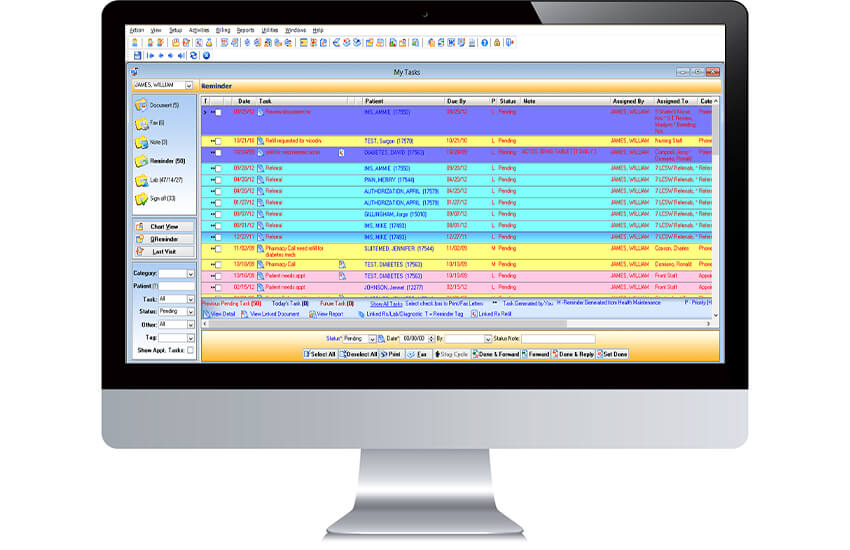
Acute care is a type of care that is relatively short but is meant for severe conditions. This is usually reserved for heart attacks, accidents, gunshot wounds, or trauma. An Acute care EMR system is usually found in emergency departments and larger hospitals. This type of EMR is made specifically to handle higher amounts of patient data. It is better suited during emergencies when providers have little time to coordinate and respond.
Ambulatory Care EMR
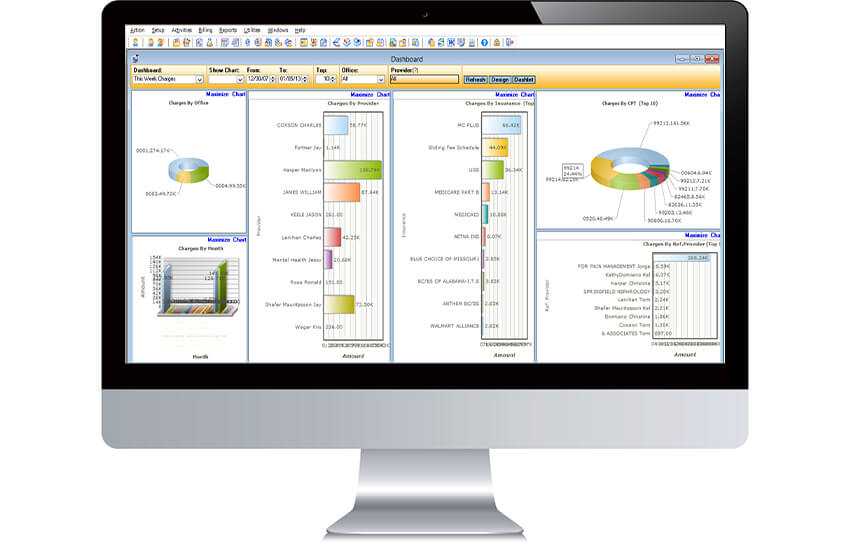
Ambulatory care centers are medical organizations that provide non-emergency outpatient care. Best examples include small to medium-sized clinics and private practices run by one or more providers. This type of EMR platform enables providers to view patients’ medical histories in a streamlined, systemic manner and also contains features for charting. Ambulatory care EHRs also feature patient portals that enable people to view their medical information anytime. This acts as a powerful tool for building patient engagement.
Hybrid EMR
A hybrid EMR combines the best acute and ambulatory care EMR. This is generally used at larger organizations that see many outpatients, patients, as well as emergency room patients. They serve dual functions and enable care operations in case of emergency admissions and regular outpatient care.
Specialty EMR
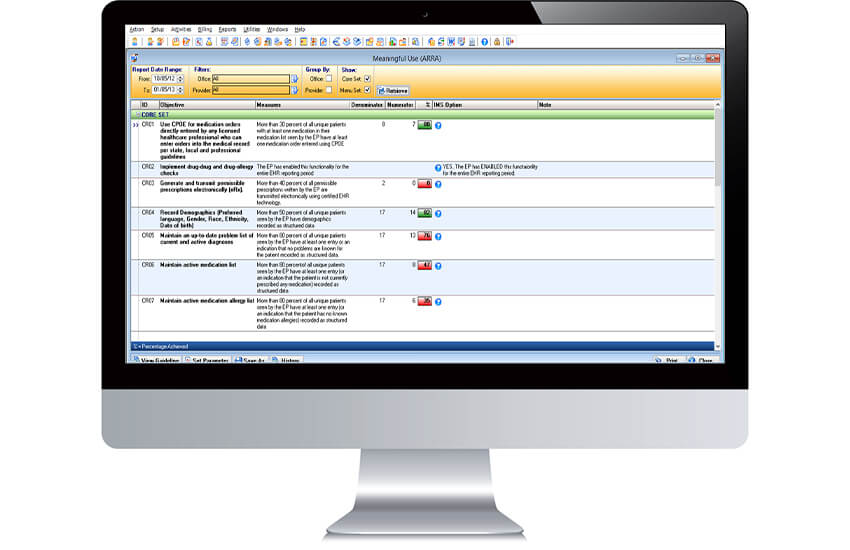
This type of EMR is developed specifically for one type of healthcare service. These can include dentistry, dermatology, ophthalmology, and so on. The charting templates, interface, and other everyday operations features are customized according to specialist needs. They help streamline the workflows for these specialists and enable them to serve their patients better.
Cloud-Based EMR
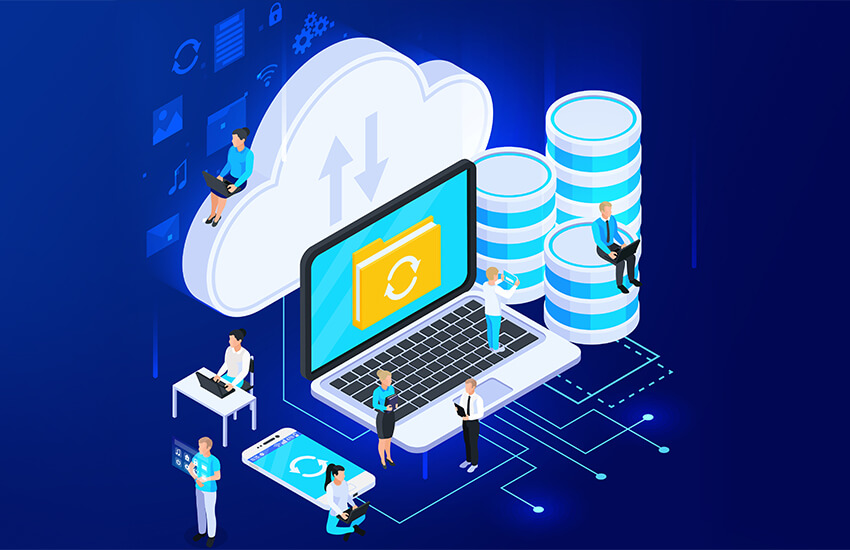
An EMR platform hosted from the cloud is installed on remote servers and stores patient data in the same place. It is accessible through the secure portal by authorized personnel. The biggest advantage of a cloud-based EHR is that hospitals or clinics don’t have to invest in dedicated hardware and IT infrastructure. They can subscribe to a service provider who handles the functionality, processing, and storage.
Cloud-based applications provide data security and backups in case of unforeseen circumstances. The hospital subscribing to it doesn’t have to spend on additional storage space in case of expansion. They can just pay a little more to the service provider as needed. Cloud-hosted medical records are becoming the norm in the case of medium to large organizations.
On-Premise EMR
An on-premises EMR is a medical records platform installed and maintained on servers within an organization. The hospital or clinic that uses an on-premises EHR needs to spend on the necessary hardware and network infrastructure. The advantage is that the organization maintains complete control over everything and is also responsible for the safety of the data.
Readymade Vs. Custom EMR Solutions
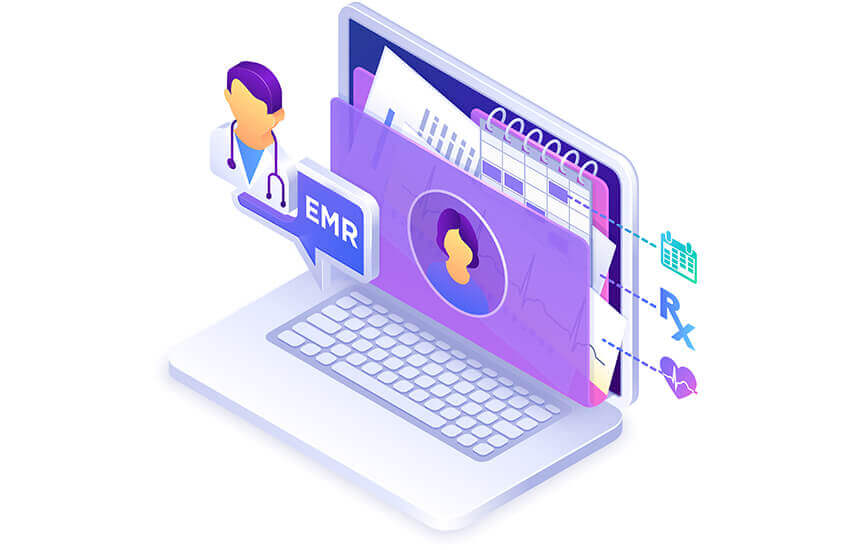
One of the main considerations for providers and larger healthcare organizations when buying an EMR is whether to get one that’s already made or have one made. There are pros and cons to both choices. The decision ultimately rests on the needs of the organization and its budgets. In this section, we will look at both types for clarity.
Doctors running private practices or administrators managing large hospitals face decisions when investing in EMRs/EHRs. It is whether to buy a readymade one or have one specially made for their needs. It is necessary to examine the differences between the two.
A readymade solution for medical records would be mass manufactured by a company and sold to anyone who can pay for it. It would come with a general set of features common for EMRs that medical organizations can use. Their purchase, implementation, and support are straightforward, as everything would be standard. Unsurprisingly, it would also cost less than a custom-built solution.
On the other hand, custom EMR software would be developed specifically according to the needs of the hospital or clinic. A comprehensive analysis of the requirements would precede its development. Developing a customized medical records solution would be longer as the steps must be modified specifically. Unlike the readymade type, this type would not be mass-manufactured and is made for one customer specifically. That is why it will be more expensive than the readymade one. It is also why its installation would be longer, and its support would be more expensive. Everything is custom-made, which will cost more.
Both types of EMRs have their pros and cons. It all depends on the type of medical organization and the capital it is willing to invest. Needless to point out, small clinics and private practices with one or just a few doctors are better off purchasing a readymade EMR system. They can have it installed and running in a few days, and it would be enough to cater to their needs. It would be within the price range feasible for them.
But larger hospitals might not be able to serve their patients well enough with a readymade medical records software platform. They might need to invest in customized software for electronic health records. A readymade solution might not mirror their services or workflows, so deploying one would be more of a hindrance than a help. So, it makes sense for them to use an EMR platform tailored to their needs. This will boost the speed of its operation post-deployment as the staff would get used to it sooner.
To sum it up, the kind of EMR solution an organization would opt for depends entirely on how much it is willing to spend. Although small clinics have been known to spend more on custom solutions, this type of EMR is mostly seen at larger facilities.
Locally Hosted Vs. Cloud-Hosted EMR Systems
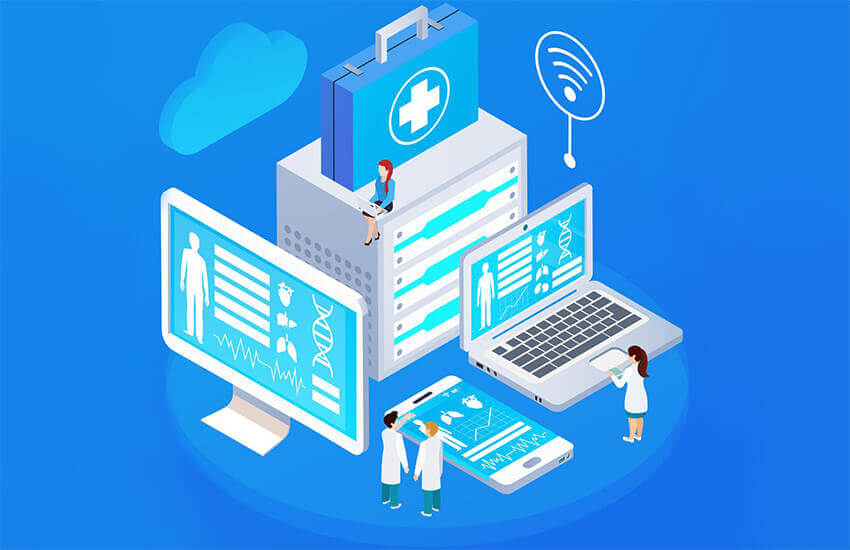
Cloud computing and allied services have grown in scope and market penetration in the previous decade. For their convenience, cloud computing services are in demand in many industries, including healthcare. The major benefit of using these services is storing patient data for hospitals and clinics. This section will look at cloud-based EMR systems and their locally hosted counterpart.
The main function of an EMR software system is to store patients’ health information. This can be done on a locally hosted-server or a cloud-hosted one. Let’s look at the differences between the two –
In a locally hosted EMR, the information is stored on servers maintained at the provider’s location. In other words, it is stored on-premises at the clinic or hospital itself. The organization that maintains a locally hosted EMR must also ensure its functionality and the confidentiality of patients’ records. While the service provider is responsible for the required updates, technical support, back-ups, and adhering to regulations, the provider must oversee the day-to-day operation. The provider must also establish and maintain a dedicated IT infrastructure and network components for the EMR. The provider bears the necessary hardware for all of this, coupled with the cost of purchasing the software,
A locally hosted EMR means all the data is stored on the hospital’s premises. So, it is up to the provider organization to ensure that there is no loss or breach of data due to malpractice or violation of protocols. Moreover, data stored on locally-hosted can be lost due to catastrophes like fires or earthquakes.
A cloud-hosted EMR stores all patient information on a remote server accessible online. This is the very definition of a cloud-hosted service. In this server type, a cloud-computing services provider provides all the necessary hardware, storage, and processing capabilities for a subscription. Moreover, the service provider also takes on the responsibility of ensuring data security and integrity. Since all the hardware is stored at a different location, the healthcare provider organization doesn’t have to spend on hardware or IT infrastructure.
A cloud-hosted EMR platform allows flexibility which the locally hosted type does not. This means the healthcare provider organization can increase or decrease the storage requirements without investing in additional hardware or decommissioning existing ones. Scaling up or down is simple and on an ad hoc basis. Additionally, disasters like earthquakes or natural calamities won’t cause a life of the data, as it is stored in distant locations. The data’s backups are also stored to ensure business continuity.
The best part about a cloud-hosted EMR is that it is available for organizations of all sizes. An internet connection is all that is needed to securely access patient data. It is relatively inexpensive, secure, scalable, and convenient. It also makes it easier to deploy medical informatics solutions to assess all the data and garner useful insights.
Integration of EMR Systems with Other Medical Platforms
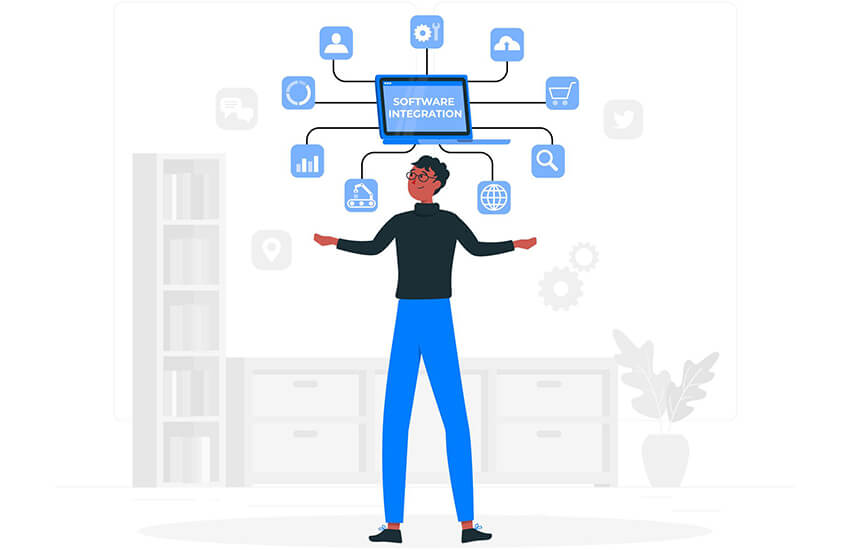
Integration of different medical systems enables them to interchange data and use it. This leads to a large, comprehensive healthcare information system at clinics and hospitals where the staff can fetch the necessary data for their activities. This section will explore integration and see how it enables administrative and clinical activities to function more efficiently.
Healthcare interoperability is when multiple medical software platforms are interconnected and share data. This allows every software to obtain the data needed for carrying out the necessary functions. Interoperability is achieved using application Programming Interface (API) software.
An Application programming interface acts as a bridging software that connects two or more software solutions. APIs enable multiple healthcare systems to communicate with each other even though they would be developed by different companies with varying programming languages and utilize different data standards. Such varying software would normally not be compatible with one another. Furthermore, the data one can process would not be usable by another system in the same format. The integration connects all of them to enable a seamless exchange of data.
The advantage of using APIs to interconnect with other software systems lies in hospital administrative and clinical operations. Consider this example – A patient admitted to a hospital would have his or her medical records viewed by the treating doctors. They can do so simultaneously and prescribe tests and scans after coordinating. The laboratory management software and the radiology information solution would receive the notifications, and the respective departments would schedule the doctors’ recommendations. The results would be accessible to the doctors and uploaded to the patient’s records. Subsequently, the billing and coding software can access the entire treatment summary to prepare claims, which would be sent to the payer.
This entire episode of care can be managed and supervised from one broad information system. This information system would comprise medical EHR software, a laboratory management solution, a radiology platform, coding, and billing software, and a payments processing solution. All of these solutions would work together seamlessly by exchanging data without hassle.
Integrating various healthcare software platforms enables hospital staff to work faster and better with fewer errors. It also paves the way for including automated healthcare solutions, such as robotics process automation software, to further boost productivity. Small, single-physician practices, too, can leverage APIs into their practice management software. In other words, API-driven integration provides a unified structure for disconnected silos to send and receive data.
Let’s look at some of the important third-party systems that combine with EMR platforms –
Telehealth Applications
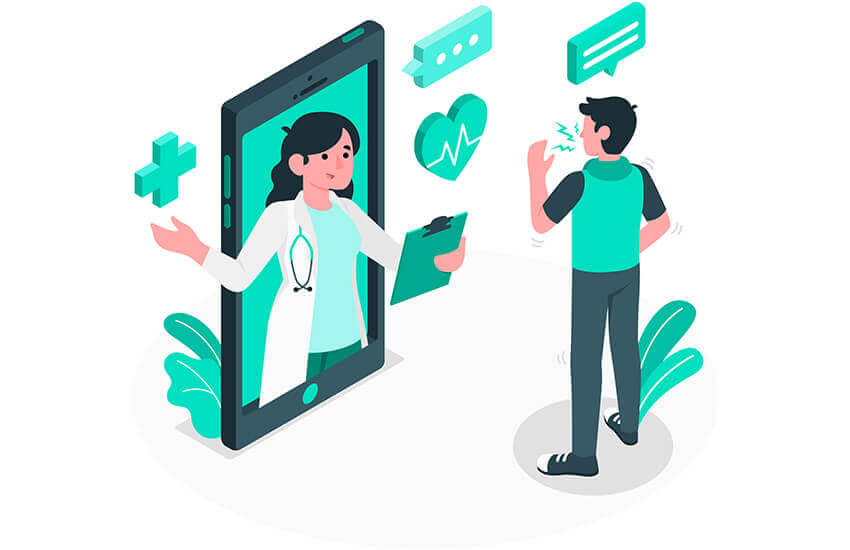
Telehealth leverages digital and telecommunication technologies to access or provide healthcare services. Telehealth solutions enable patients to access a provider’s medical services remotely without seeing the provider in person. It was a novel idea and remained so until the Covid-19 pandemic. Subsequently, it didn’t take long for doctors and patients to see the value of remote patient care.
Remote patient care involves using dedicated technologies to enable doctors to monitor patients outside conventional clinical settings. Integrating a telehealth platform into hospital information systems or practice management solutions allows providers to offer their service remotely.
Telehealth software incorporated into broader health systems allows providers to offer virtual consultations, view patients’ health data, prescribe medications electronically, and bill for their services from one interface. This is accomplished by integrating telehealth solutions with EMR or EHR, practice management or health information management systems, and billing solutions.
Medical Device Integration
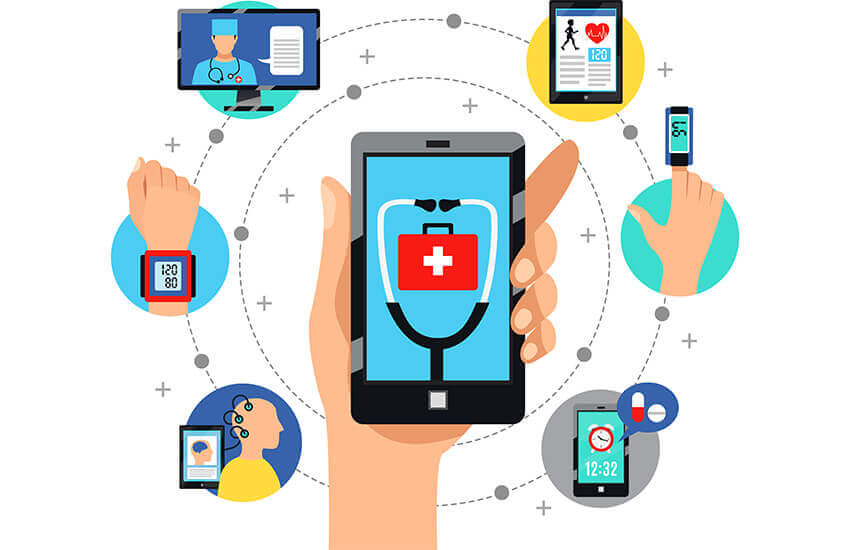
Hospitals must view patients’ data in real-time and be notified of any changes. This is especially important for people admitted to ICUs and emergency rooms. A medical device integration (MDI) solution is a platform that collects patients’ vital signs generated from medical devices. This data is then incorporated into EMRs automatically.
Medical records software integration streamlines and accelerates the entire process of inputting and storing patient data from MDIs. This makes it easier and more convenient to manage the care of patients admitted. Doctors can observe the readings and notice their fluctuations to obtain insights into patients’ conditions and make informed decisions.
Clinical Trails Management
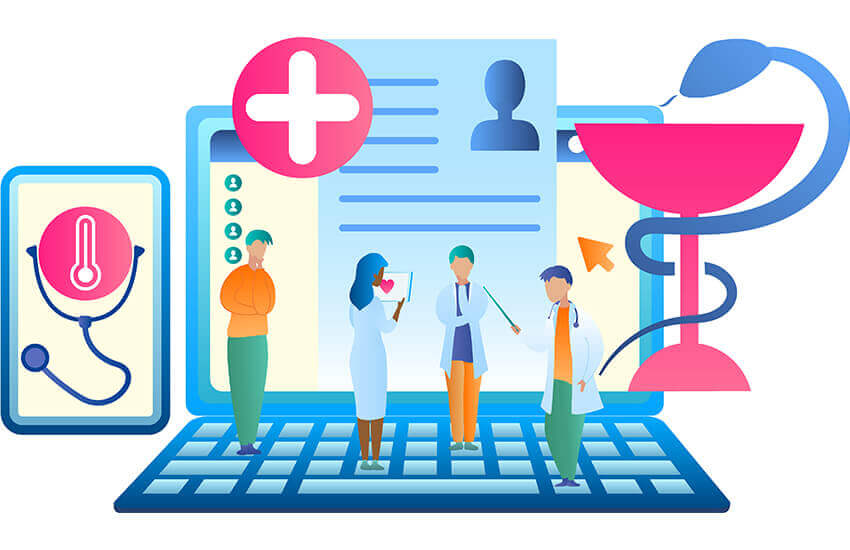
Integration of a platform for clinical trials management platform with an EMR enables pharmaceutical and biotechnology companies to conduct trials better. Medical records contain a person’s medical history, including diagnoses, treatments, allergies, and other information. This is invaluable for companies testing a new drug or medical device.
Pharmaceutical companies spend hundreds of millions of dollars on developing new drugs. They are required to follow stringent standards when conducting tests on people. Each clinical trial is followed by weeks and months of observation to see how the drug affects a person’s health. So, integrating an EMR/EHR is essential for efficient clinical trials as it will enable the researchers to understand drug interactions better.
Laboratory Management System

Testing laboratories at hospitals is vital for patient care. Doctors prescribe tests to determine the patient’s medical situation and recommend the necessary treatments. However, as hospitals grow, the number of tests needed to perform and the corresponding results generated tend to grow. This is where a laboratory management system (LMS) helps. An LMS platform integrated with an EMR solution makes it fast, simple, and secure for physicians to access the test results they prescribe.
Integrating medical records with the laboratory system enables hospitals to upload results directly, making them accessible to doctors. A single doctor treating multiple patients at a hospital can view their records and see the results to know what is going on. This streamlines care procedures, reduces the need for paper-based reports, and optimizes everyday hospital operations.
Factors Influencing Cost of EMR Development
Developing an EMR platform is no small feat; like the developmental process of all software systems, an EMR to has a set of factors that need to be considered. The main among them is the cost of building one. This section will discuss what affects the cost of developing EMR software.
Building a medical records platform is an elaborate process with a development lifecycle. New companies looking to build one must be mindful of all the factors impacting the development cost. Large companies with industry experience would have the knowledge and resources to develop one. But for small, cash-strapped start-ups, the things to consider when building an EMR include the following –
Market Assessment
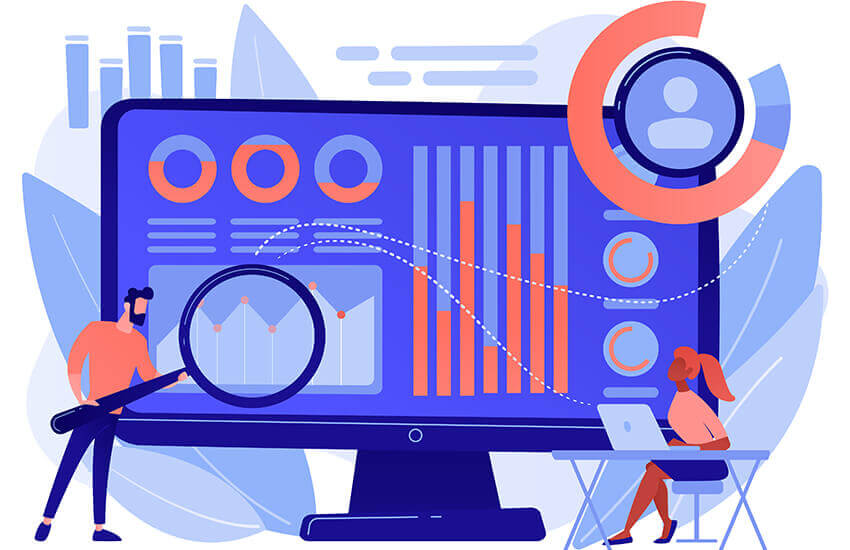
This is perhaps the most important step before building any software platform. Market research is crucial for software development, whether for healthcare, business, finance, or anything else. Market research reveals the competitors involved, their products, market share, the latest trends, emerging technologies, etc. In other words, knowing the market sheds light on what is needed and what can be delivered.
It is not uncommon for highly functional software with a good interface to not capture market share due to existing similar products. Simply put, market research shows what is lacking in the current market and what needs to be done to attract the most customers. The decision to move forward with the idea depends on the results of this assessment.
Software Framework

The next step after knowing the market is to develop an architectural framework for the software platform. It would contain the structure of the software and a broad idea of how it must function. Developers make important decisions like establishing relationships between components, the flow of data, communication among different parts, and overall functionality.
Developing the framework requires experience, making it necessary for a company to have the necessary talent on its roster. Another way is to contract the process of building the framework to an independent company. Either way, this would help provide a perspective on the software to be made and will be immensely helpful for making vital decisions during development.
Backend Development
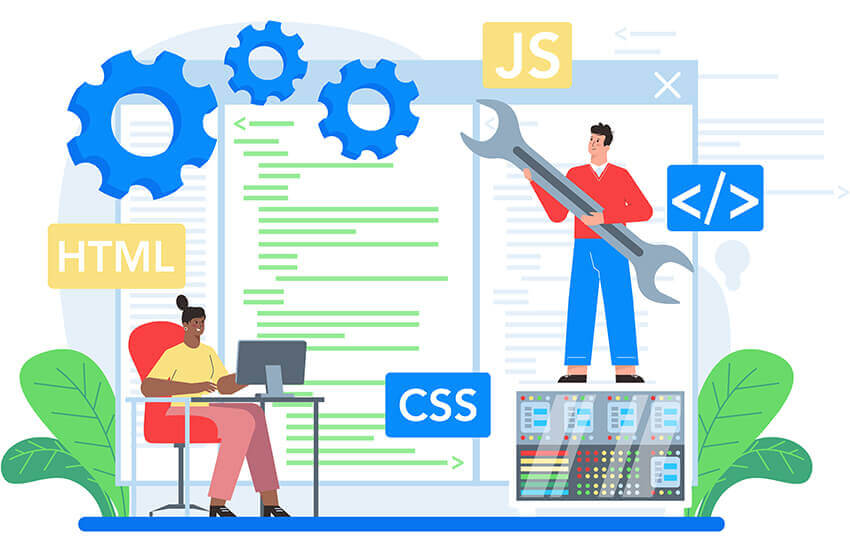
The backend of a software platform is what makes it work. It includes the database and all the necessary physical and digital infrastructure for the software. The backend of software depends on the technologies used, the programming language, and the overall configuration of the platform. In simple words, it is the side of the software that common users would never see or interact with, but it makes the platform function.
As with developing the framework, building the back end of any software requires experienced programmers. New companies must recruit programmers who would have worked on similar projects for years. This is an important phase of the overall development of the EMR. It is where the cost begins to show.
Frontend Development

The front of EMR software is the part that is visible to the users. It includes buttons, data entry fields, and other hardware. Developing a good front end is essential for any software, EMR or otherwise. It is what is visible to users, and they will interact with the front end to access the features and functions of the website. The usability of EMR software depends on the front end, which also impacts its popularity. So, developing an EMR must involve skilled programmers building this component.
Implementation of Roles

This is more of a management factor than it is about investing in resources. Building an EMR software system would require an experienced team of professionals working together to achieve a common goal. To supervise their work, the team must consist of UI/UX designers, frontend and backend developers, programmers, business analysts, and a seasoned project manager.
The entire recruiting and staffing process would no doubt take time and capital. For a newly founded company, this can be the most important phase of its operation. The right team will make all the difference between success and failure. So it is important to assign the right role to the right person, even if they have similar skills and experience.
Database Design

The size of the database determines its cost. Unsurprisingly, the database stores all the actual data types of an EMR. It needs to be secure and robust. An EMR with a large database, usually for hospitals, would incur higher costs than one for small clinics or practices. The target customer, in this case, is what will impact its cost.
Regulatory Compliance
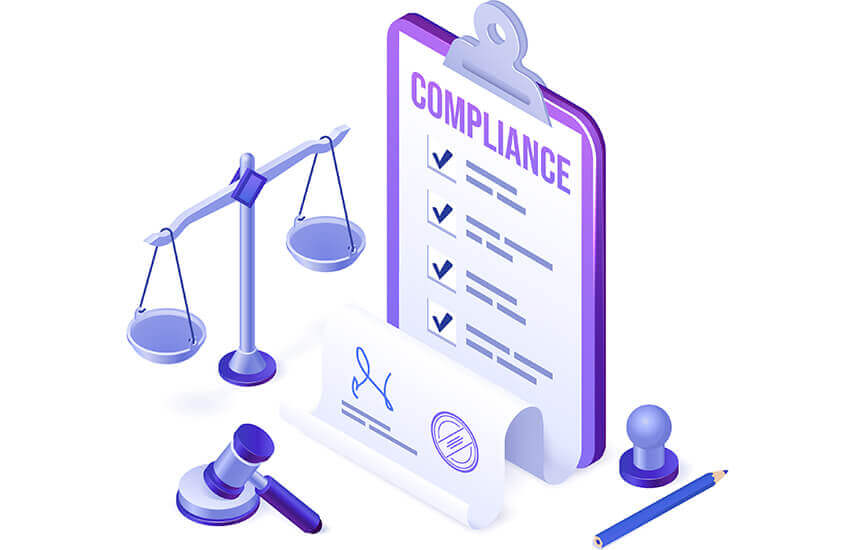
Healthcare software development companies must comply with government regulations stipulating their development and operation. Among them is HIPAA (Health Insurance Portability and Accountability Act). This regulation governs, among other things, the activities surrounding patient data management.
EMRs contain confidential medical data about patients and, so, need to be highly secure. The HIPAA regulation requires companies to develop medical software to ensure adequate measures to protect the privacy and integrity of data. EMR development companies must ensure HIPAA compliance or face serious legal consequences. Making sure this happens requires extensive testing against established standards. This can be carried out in-house or through independent contractors.
Product Testing

This is the final stage of developing EMR and any software. Once the EMR has been developed, it must be tested to see if everything works as planned. This is the phase where previously overlooked bugs and glitches would appear. Testing can be carried out by testers employed in-house or by external contractors. Setting aside adequate resources for this phase is essential since it determines the quality of work.
The entire process of developing EMR systems must be seen as one big project requiring an experienced manager to govern. While larger corporations are likely to have people who fit this bill, smaller start-ups might need to hire someone with the necessary qualification.
Future Predictions For EMR Systems
Technology is an ever-changing landscape. The previous decade has seen newer innovations in healthcare, and advancements in existing technology have penetrated the industry. These have led to observers and experts making several predictions for the future of medical technologies, especially EMR solutions. In this section, we will look at some of them.
The latter half of the previous decade has seen numerous advancements in artificial intelligence and machine learning technologies. The Covid-19 pandemic also led to the adoption of telehealth solutions in the United States and globally. The rise of wearable medical devices and automation systems has also signaled some major changes right around the corner. These are predicted to have a sizeable impact on the functionality of EMRs and their place in healthcare workflows –
Standardization
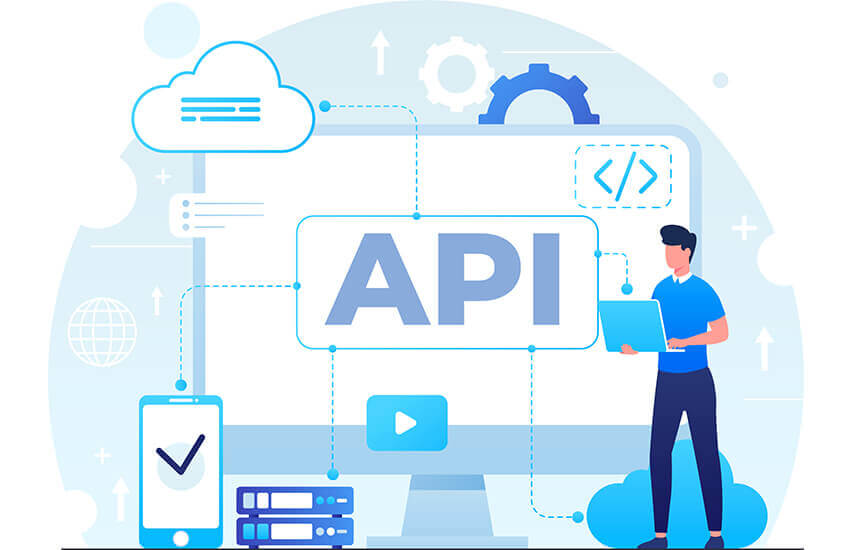
The Office of National Coordinator for Health Information Technology standardizes the regulations for EMR. The ONC has instructed the healthcare sector to implement standardized APIs (Application Programming Interfaces) to streamline the flow of medical data between devices. It is to make it simpler for people to access their medical information on their smartphones. The APIs facilitate interoperability among different medical software platforms for efficient healthcare operations.
Standardizing APIs will also make it easier for the industry to follow established processes and protocols when developing and implementing EMR solutions.
Telehealth
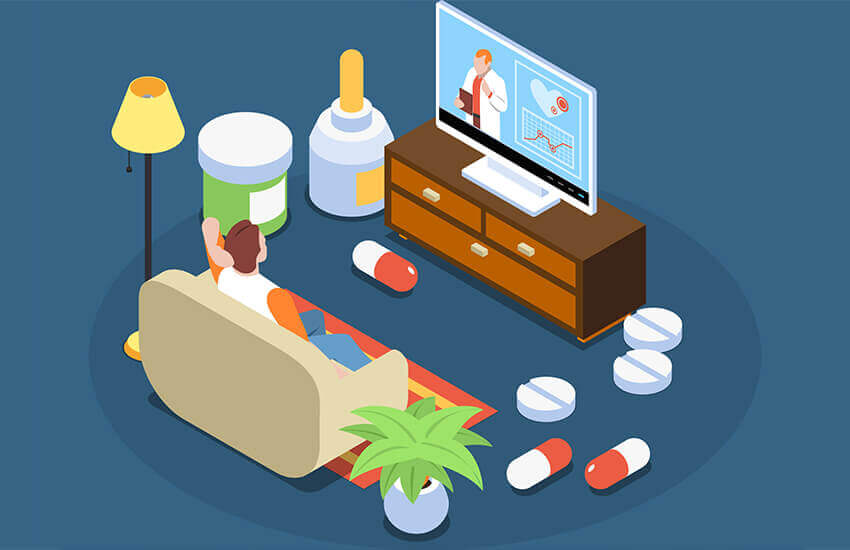
Telehealth was a novel idea discussed in medical circles without much development. But the Covid-19 pandemic changed everything by forcing people to stay indoors for weeks. This made it necessary for a way to access medical services remotely. That is when providers, as well as healthcare technologists, saw the importance of telehealth software. It didn’t take long to integrate with EMRs for better patient care.
A practice management solution or a hospital information system integrated with an EMR and telehealth software boosts the quality of care. Physicians can access patients’ records while in a virtual consultation. This offers complete access to the necessary information to help doctors make informed prescription decisions. Hospitals, clinics, and even smaller medical practices nationwide have begun integrating EMRs with telehealth software.
Robotic Process Automation

Robotics process automation (RPA) is one of the most talked about buzzwords in the industry. Simply put, it is a software technology that emulates human interaction with other software systems. As a result, it automates the work that humans otherwise do on a software interface. Automation maximizes the speed of operations while eliminating any chances of human errors.
RPA software integrated with EMR solutions accelerates the speed of activities like data entry and others typically carried out by human staff. Since EMRs comprise the hospital information system’s central component, integrating RPA solutions would greatly enhance the efficiency of everyday activities.
Remote Patient Monitoring Software
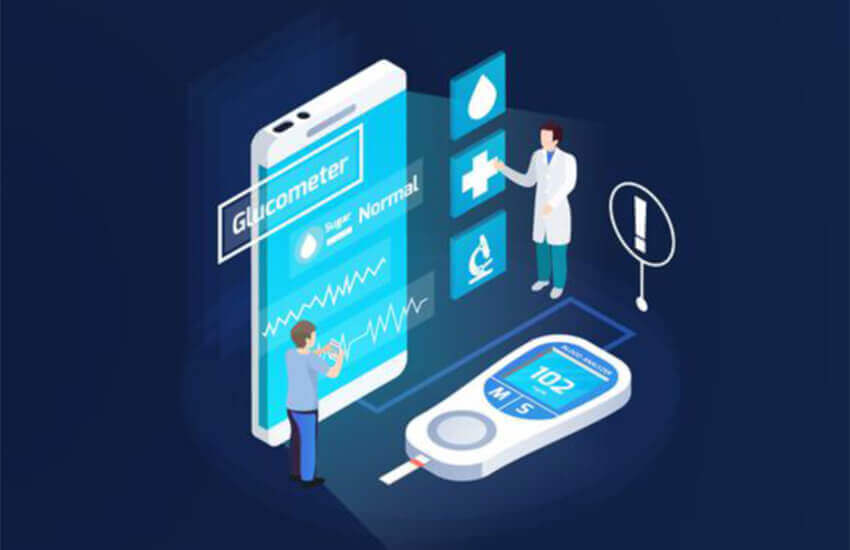
Remote patient monitoring (RPM) is a concept in which providers can monitor patients’ health vitals outside the usual clinical settings. This is possible through IoT-driven medical devices like blood pressure cuffs, wireless ECG monitors, glucometers, etc. An EMR integrated with a remote patient monitoring application would be able to gather the medical data generated from wearable devices and make it accessible to providers.
Many providers and policymakers consider this to be a big part of the future of healthcare. It envisions a world where people use medical wearables and share their vital signs continuously with providers. This will boost the quality of RPM and make specialist care more accessible to people living in distant, rural underserved locations.
Artificial Intelligence-Driven Analytics
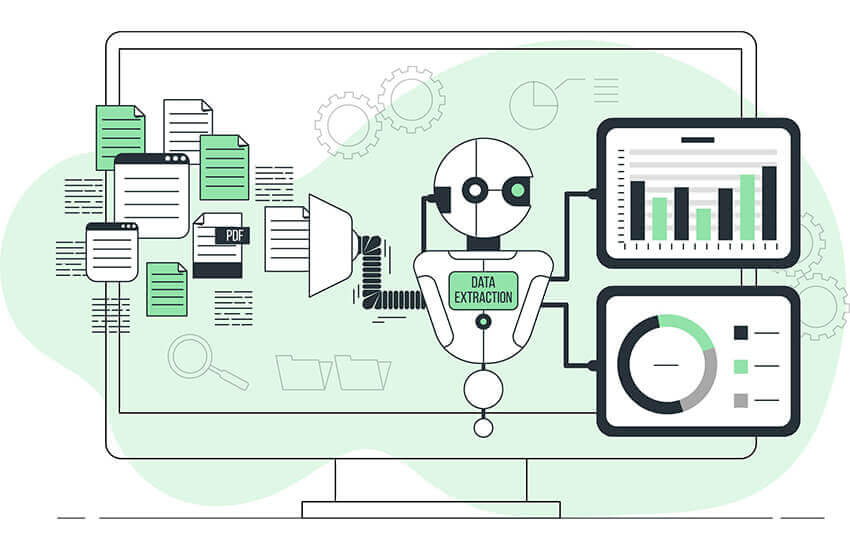
Artificial intelligence, or AI, is one of the most talked-about technologies globally. The potential for this is seemingly limitless as all industries worldwide grapple with adjusting to the changes it will bring about. Regarding healthcare analytics, AI can increase the capacity and efficiency of the analysis to reveal previously unknown insights.
With an EMR, AI-based algorithms can quickly assess large amounts of data. This can help physicians know more about patients’ health and identify who might be at greater disease risk. Furthermore, it will help public health experts handle epidemics better and empower the government to respond faster. Physicians and software developers see a bright future for healthcare with the union of AI and EMR software.
Conclusion
Electronic medical records (EMR) and EHR are indispensable tools in patient care. They represent a single repository of medical information on patients. Digitizing records was one of the first widespread digitization measures in the healthcare industry. As the years went by, the software for EMR got better and better until it could integrate with and function alongside other medical technology solutions. This represented a major milestone for medical technologies as it paved the way for hospitals to leverage the advantages of all the software platforms working in unison.
With the ongoing advances in IoT, telehealth, and artificial intelligence, policymakers and doctors foresee a future with deeper technology penetration in the healthcare industry. Artificial intelligence and machine learning are expected to disrupt healthcare in many ways than we can imagine. Nevertheless, EMRs will only evolve in features and functionality by introducing newer technologies.
References
- https://digitalhealth.folio3.com/blog/what-is-emr-system/#What_is_an_electronic_medical_record_system
- https://topflightapps.com/ideas/how-to-develop-ehr-emr-system/#1
- https://www.romexsoft.com/blog/emr-ehm-development/#Advantages_of_Using_an_EMR_and_EHR_Systems_For_Health%D1%81are_Organization
- https://tateeda.com/blog/custom-ehr-emr-software-development-the-complete-guide#The_Most_Popular_Features_of_Custom_EMREHR_Systems
- https://www.emizentech.com/blog/ehr-emr-software-development.html
- https://echoinnovateit.com/emr-software development/#EMR_Software_Features_For_Development
- https://topflightapps.com/ideas/how-to-develop-ehr-emr-system/#4
- https://spdload.com/blog/how-to-build-ehr-eml-software/
- https://www.selecthub.com/medical-software/emr/electronic-medical-records-future-emr-trends/
OSP is a trusted software development company that delivers bespoke solutions as per your business needs. Connect with us to hire the best talents in the industry to build enterprise-grade software.

How can we help?
Fill out the short form below or call us at (888) 846-5382
Looking for software solutions to build your product?
Let's discuss your software solutions for your product in our free development acceleration call!
Get In Touch arrow_forwardDiscuss Your Project Handover with a team of expert Book a free consultation arrow_forward
About Author

Written by Riken Shah linkedin
Riken's work motto is to help healthcare providers use technological advancements to make healthcare easily accessible to all stakeholders, from providers to patients. Under his leadership and guidance, OSP Labs has successfully developed over 600 customized software solutions for 200+ healthcare clients across continents.







